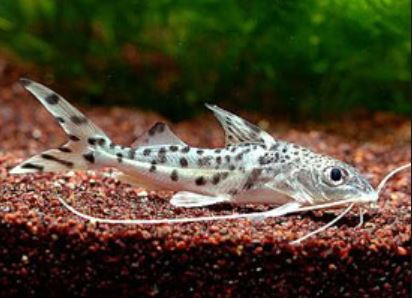
One of the great tropical catfish available in market has to be the impressive looking Pictus Catfish. These are terrific subjects for most aquariums for their beautiful “dalmation” appearance, active behaviour, peaceful nature, low maintenance requirements and longevity.
Common Name(s) : Pictus Catfish
Genus : Pimelodus
Family : Pimelodidae
Species : Pimelodus pictus
Maximum Size : 12.5cm / 5 inches
Lifespan : 5-8 years
Aggression Level : Peaceful, larger specimens can eat small tetras (5/10)
PREFERRED WATER CONDITIONS
Tank Size : 80 Litres +
PH : 6.0 – 8.0
Hardness : Soft to Moderately Hard 5° to 18° dH
Temperature : 23 – 26°C / 73.4–78.8 °F
TANK SET UP
Pictus Catfish are naturally found in the Orinico and Amazon Rivers, and can usually be found in areas with a steady flow of water over a muddy or sandy bottom. It is a shoaling species, and they will often be found in large groups in the wild. They are a nocturnal fish so we find adding areas of cover ie plants, caves etc is good practice in the aquarium – however wide expanses of space is also appreciated for these active little guys. They are not fussy for PH or water hardness making them very good subjects for most aquarists.
SUITABLE TANK MATES
- Particularly good with most tropical fish of similar size eg Gourami’s, Angelfish, Sharks, most livebearers
- Large tetras are acceptable tank mates however best to not keep them with neon tetras
- Most of the time they keep really well with both American and African cichlids
DIET
Haha these guys are not fussy eaters and are well known to be avid and keen eaters. They are omnivores that will accept pretty much anything, we have most success with some sinking pellets, flake food that is placed into the water (rather than floating it on top of the water) and frozen bloodworms, again swished into the water.
SEXING AND BREEDING
Sexing Pictus is not documented anywhere and there are very few reported cases of the breeding in captivity.
What we do know is that they are an egg-laying catfish and that gravid females feature a plumper appearance.
It is reported that Pictus do not care for their young, and given that they have a taste for small fish – you’d imagine that any little fry in an aquarium would soon enough become a meal.
